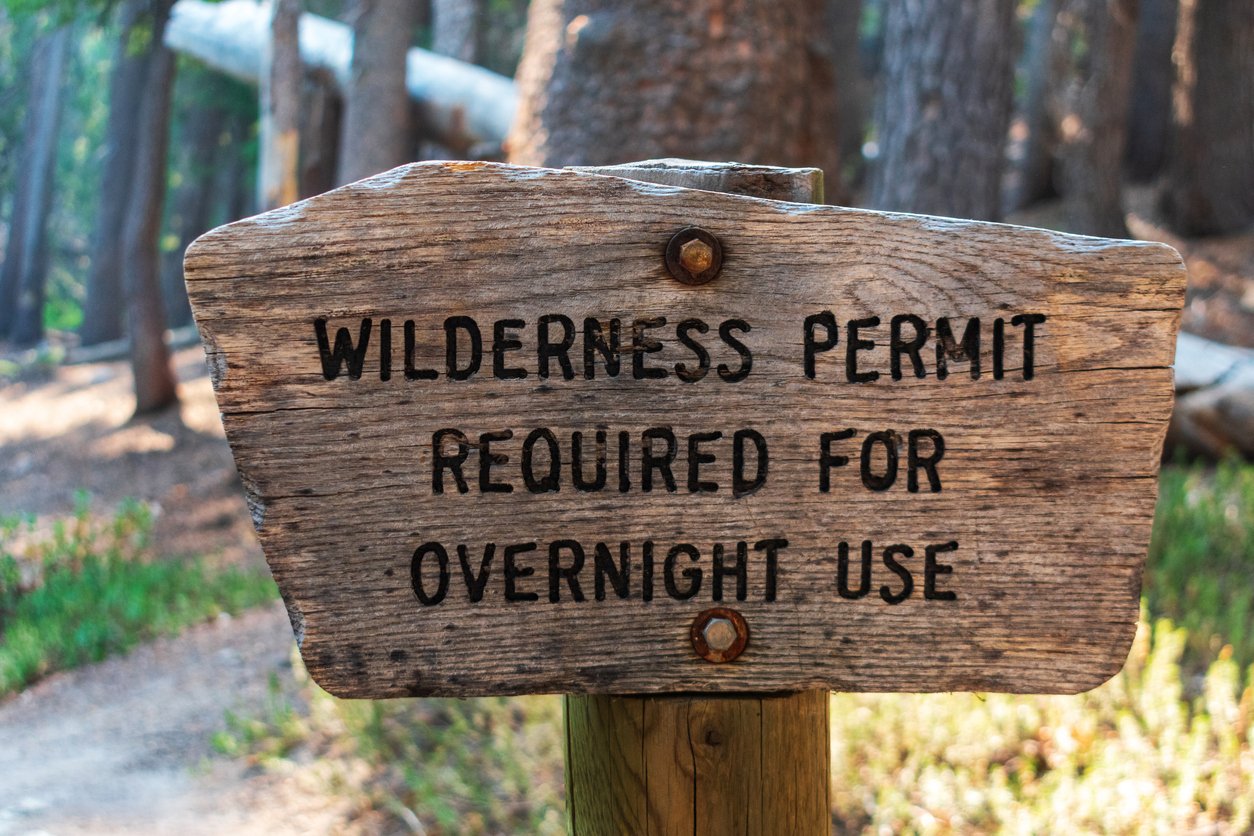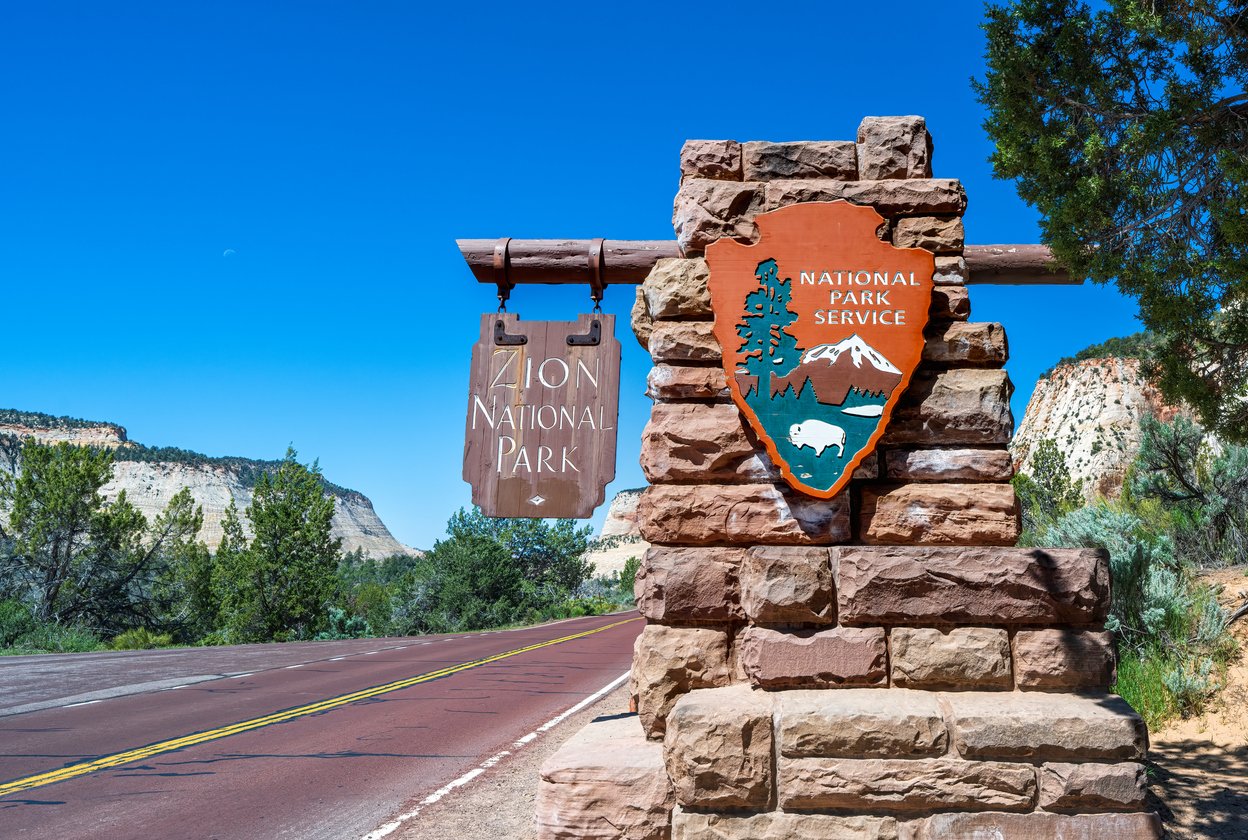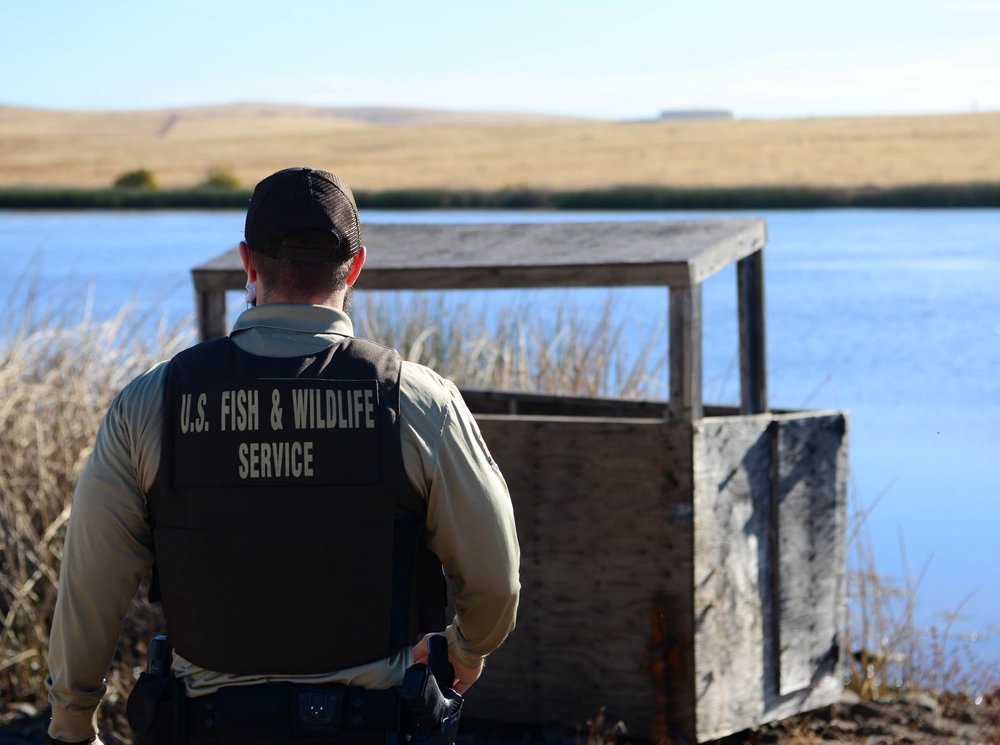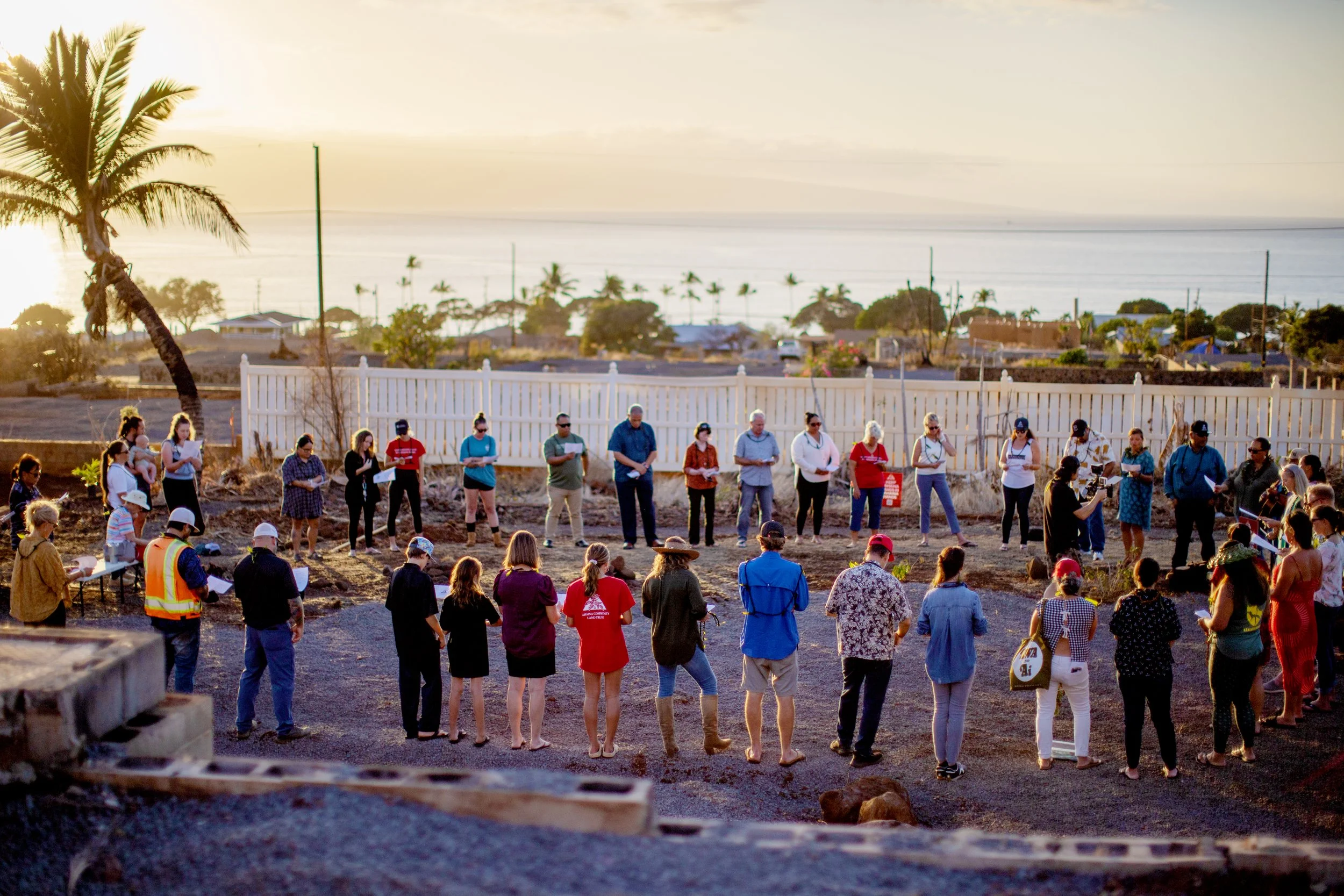How to Hike and Camp on Public Land
It’s time to plan the perfect summer getaway, and you know just the spot—thanks to your Explore page. The only problem is, you’re not sure about cost-per-vehicle, timed entry tickets or camping fees. You don’t know if you need a backpacking permit. Why is getting outside on public land so confusing? And how do some people seem to effortlessly navigate this process, while others struggle?
In the United States, public lands are accessible to everyone, in theory—but only if you know the inside baseball.
We’re going to start at the beginning. Don’t hate the messenger but it’s easier to start by explaining that public land in the U.S.—all 640 million acres—is managed by an alphabet soup of federal agencies. And they all have different rules governing outdoor recreation, hunting and fishing. But don’t despair!
We did research so you don’t have to. This article breaks down the four largest federal land managers, plus three more you’ve probably never heard of.
1. Bureau of Land Management (BLM)
The largest federal public land manager in the U.S. is BLM. They also have the smallest budget of the seven agencies highlighted in this article.
Did you know, one in every ten acres of U.S. public land, or 245 million acres, falls under the Bureau of Land Management (BLM)? They are the largest federal public land manager in America.
BLM is an agency within the U.S. Department of the Interior whose mission is to “sustain the health, diversity, and productivity of public lands for the use and enjoyment of present and future generations.” Their 10,000 employees are spread across the country from their headquarters in Washington, D.C. to 170 state and field offices. They are powered by a modest $423.9 million budget plus approximately $1.4 billion in discretionary funds.
Their portfolio includes 37 million acres of National Conservation Lands—national monuments, wilderness areas, wild and scenic rivers, national scenic trails and national conservation areas—like the Continental Divide Scenic Trail and the Central Arctic Management Area.
BLM practices multi-use land management, balancing environmental protections, people and profit—although they probably would not endorse the shorthand. However, it explains why they manage “outdoor recreation, livestock grazing, mineral development, and energy production on public lands” alongside conservation, watershed restoration, and wildlife habitats.
They also run the second-largest federal fire program, second only to the Forest Service. BLM wildland firefighters, headquartered at the National Interagency Fire Center in Boise, Idaho, focus on fire suppression and prevention on BLM’s 245 million acres. In addition, they partner with other agencies to fight fires on a total of 650 million acres across the U.S.
Mistakes were made:
BLM oversees leasing, exploration and operation of the federal government oil and gas program on 700 million acres, or 30% of the country’s subsurface minerals. U.S. and foreign companies currently hold 34,000 leases on 23.7 million acres of public land. And why wouldn’t they? The U.S. government heavily subsidizes the fossil fuel industry.
And while oil companies are legally required to demonstrate they have set aside enough money for environmental cleanup, this wasn’t always the case. Up until this year, BLM required just a $10,000 bond per lease and a $25,000 bond for statewide coverage, even though the actual cleanup costs per well are much, much higher. That oversight left companies like Chesapeake Energy, “$2 billion short on bonds for the cleanup of more than 11,000 wells.”
Oil companies have a documented history of behaving badly on public lands, to include selling off assets (or pursuing bankruptcy) to avoid paying environmental fines and abandoning wells to leak gas into neighboring communities. Of the 18 million Americans who live within one mile of an active well, who do you think is disproportionately affected? If you guessed low-income communities of color, you’d be correct!
Oil companies also have a history of underpaying tribes despite revenue sharing agreements.
Despite the many challenges, “federal onshore oil and gas leases generate about $3 billion a year in federal revenues”. In FY 2021, BLM shared $2 billion in revenue with state and local governments via “the Taylor Grazing Act, the Mineral Leasing Act, the Mineral Leasing Act for Acquired Lands, Payments in Lieu of Taxes, and the Secure Rural Schools and Community Self-Determination Act.”
Okay that’s nice, but how do I camp for free?
How to prepare for your visit
Does it cost money?
Girl no. They are leasing oil and gas rights. They don’t need your little parking fee. This isn’t the National Park Service.
So that’s mostly true but not always.
BLM manages 3,400 recreation areas which are mostly free of charge. Some sites do require a special lottery-based permit to access, including overnight camping along the South Fork of the Snake River in Idaho and backpacking in the Cedar Mesa canyons at Bears Ears National Monument in Utah. Paying fees helps keep BLM land accessible for “hiking, hunting, fishing, camping, mountain biking, horseback riding, boating, whitewater rafting, off-highway vehicle driving, rock climbing, and more.” That’s what they say anyways.
There are also fee-free days throughout the year in honor of holidays like:
January 15 (Birthday of Martin Luther King, Jr.)
June 19 (Juneteenth National Independence Day)
July 16 (BLM's birthday)
September 28 (National Public Lands Day)
November 11 (Veterans Day)
At their developed campgrounds, you can reserve a campsite for a fee, and take advantage of restrooms, electrical hookups, shelters, fire rings and potable water. Some operate on a first come first serve basis while others require a reservation through recreation.gov. Stays are typically limited to a maximum of two weeks in a 28-day period. BLM also offers dispersed camping on most of their land “as long as it does not conflict with other authorized uses”. If you intend to camp on BLM land, look for commonly-used dispersed camping sites off secondary roads, and avoid areas that are marked as “closed to camping”.
Camping varies a lot per region. In Alaska, camping on BLM land is extremely popular during the summer, however facilities are minimal. For example, there is only one RV dump station on Alaska’s 70 million acres of BLM land. Shocking absolutely no one, wastewater frequently ends up dumped in campground restrooms instead—where it creates a mess. Is this an end user problem or is BLM stubbornly refusing to build additional dump stations at RV campgrounds?
That’s a great reminder that camping on BLM land is often free—just don’t expect facilities to match demand. This isn’t the National Park Service.
2. National Park Service (NPS)
iStock
The National Park Service is another federal public land manager that falls under the Department of the Interior. They manage 429 units across 85 million acres in the United States and its territories, from the world’s largest trees in Sequoia & Kings Canyon National Park to the only NPS-owned and operated skate pavilion in the District of Columbia.
The bureau is powered by a $1.4 billion annual budget and approximately $3.4 billion discretionary appropriations. They also depend on a workforce of 20,000 employees and 279,000 volunteers.
NPS welcomed 325 million visitors in 2023, a 4% increase from the year before. The Great Smoky Mountains remains the most-visited park in 2023, with over 13.2 million visitors. The Grand Canyon was a distant second with over 4.7 million visitors.
The newest NPS additions include the Amache Historical Site, formerly Granada Relocation Center, which unjustly imprisoned 10,000 people of Japanese descent between 1942-45. There are also three new long-distance hiking trails: the Ice Age National Scenic Trail in Wisconsin (1,200 miles), the New England National Scenic Trail in the Northeast (235-miles) and the North Country National Scenic Trail (4,500-miles) which will traverse the Lake Superior Region, Adirondacks, Ohio River Valley, and North Dakota plain when it’s completed.
How to prepare for your visit
Use the NPS.gov “Find a park” tool to find a park, monument or scenic trail near you. They also have a downloadable ‘Trip Planning Guide’ full of things you should know before you go, like checking the weather and packing the 10 Essentials.
Their fee-free days for 2024 are as follows:
January 15: Martin Luther King, Jr. Day
April 20: National Park Week
June 19: Juneteenth
August 4: Great American Outdoors Day
September 28: National Public Lands Day
November 11: Veterans Day
Three hundred national parks, including Great Smoky Mountains National park, are free all year round. For the rest, if you can show proof of U.S. military service, permanent disability, senior citizenship or a fourth grader, you can also get an annual vehicle pass for free or at a discount.
Do National Park Service rangers carry weapons?
The answer is some of them. NPS has a special division of law enforcement rangers who serve as its police force. They carry weapons and are authorized to make arrests and conduct investigations. These aren’t the same as the interpretive rangers who lead educational programs or the guides staffing the visitor center. But if you’re visiting a national park, you may encounter armed NPS rangers. Unfortunately, societal prejudices do apply. Nature doesn’t have an opt out button.
3. U.S. Fish and Wildlife Service (USFWS)
U.S. Fish and Wildlife (USFWS) is another federal public land manager under the Department of the Interior. Their mission is to “conserve, protect, and enhance fish, wildlife, plants, and their habitats for the continuing benefit of the American people.”
They are headquartered in DC and northern Virginia and maintain eight regional offices and 800 field stations. Fish & Wildlife is powered by 9,400 employees, an $1.92 billion annual budget plus another $1.72 billion in discretionary spending that directly supports conservation funds, state and tribal wildlife grants, construction and resource management.
While that may sound like a lot of money, USFWS has also been impacted by flat budgets and budget cuts over the past few years, which makes their mission challenging.
Fish & Wildlife helps protect over 1,000 bird species under the Migratory Bird Treaty Act along with 2,300 at-risk species under the Endangered Species Act. They also work with countries around the world to conserve habitats via international treaties.
At home, they manage 95 million acres of land across 38 wetland districts and 565 wildlife refuges—including the 19.6 million acre Arctic National Wildlife Refuge. They also manage five marine national monuments, totaling 850 million acres of water. Lastly, they oversee 70 fisheries nationwide, partnering with “45 Native American and Alaska Native Tribes to stock over 5 million fish into tribal waters every year.”
Finally, USFWS maintains wildland firefighting crews who use prescribed burns to cultivate “healthy wildlife habitats”, a land management technique that tribes used long before the arrival of European settlers.
How to prepare for your visit
Use the map on their website to find a FWS wildlife refuge, field office or fish hatchery near you.
USFWS wildlife refuges support multi-use recreation including hunting, fishing, birdwatching, wildlife photography, paddling, hiking, camping and educational programs. Most are free. Permits may be required to hunt, fish or camp.
Interested in fee-free days?
Thirty of the 565 national wildlife refuges charge entrance fees ($3-5). If you’re a frequent visitor, you might consider buying an annual pass ($80) which is discounted for senior citizens ($20) and free for veterans and permanently disabled people. Or you could take advantage of the annual fee free days below:
January 15 (Rev. Dr. Martin Luther King Jr. Day)
June 19 (Juneteenth)
September 28 (National Public Lands Day)
October 13 (first Sunday of National Wildlife Refuge Week)
November 11 (Veterans Day)
Permits
Hunting with a valid state license is permitted at 401 of the 565 wildlife refuges and at 35 of the 38 wetlands managed by USFWS. Why is hunting allowed in a wildlife refuge? Because it supports “healthy wildlife populations”. It’s also an important cultural practice. For example, “Hunting is allowed at all 16 national wildlife refuges in Alaska” where subsistence hunting of “moose, caribou, deer, bear, Dall sheep, mountain goat and beaver” is vital to Alaska Native food sovereignty
Because hunters share wildlife refuges with other types of visitors, it’s important to follow USFWS recommendations to stay safe, to include keeping track of hunting seasons, staying out of designated hunting areas, dressing in bright clothing, and keeping your pup leashed in areas where dogs are permitted.
Lastly, keep in mind that Fish & Wildlife game wardens dress like law enforcement because they are law enforcement. They also carry weapons.
4. U.S. Forest Service (USFS)
iStock
The U.S. Forest Service (FS) manages 154 national forests and 20 grasslands, totaling 193 million acres of land. That’s roughly the size of Texas. Unlike the other federal land managers mentioned so far, they don’t fall under the Department of the Interior. Instead, they belong to the U.S. Department of Agriculture.
Last fiscal year, the Forest Service budget was $4.8 billion plus $10 billion in discretionary spending, $3 billion in emergency supplemental funding and another $2 billion wildfire adjustment—almost $20 billion in total. And that is what you call a proper budget.
Their motto is “Caring for the Land and Serving People”. Similar to BLM, the Forest Service also has a multi-use land management strategy that includes outdoor recreation, logging, timber sales, livestock grazing, and mineral leases. A portion of the revenue from the former—$228 million in 2023—gets redistributed to states through programs like Secure Rural Schools.
Of course, the Forest Service is also focused on protecting and managing national forests and grasslands, forestry research, and partnering with state, local governments and tribes to help manage non-federal forests. One way they protect national forests is through fire management and wildland firefighting.
Mistakes were made:
The Forest Service runs the largest fire program in the country, with 11,000 wildland firefighters—one-third of which are laid off at the end of every season. While the federal government now understands that “wildfire is an essential part of the ecosystem”, the century they spent suppressing it created a massive fuel load of “dead underbrush” and “thick stands of trees primed to burn across much of the American West.” As a result, the U.S. government is now dealing with a much longer fire season that is bigger and more destructive than previous decades. Climate change is also a contributing factor.
In 2024, the USDA Secretary announced plans to invest $500 million in the Forest Service’s Wildfire Crisis Strategy. That will help shoulder the costs of fire camps, air tankers, helicopters, contract crews and more. It will also help them recruit and retain crews by increasing their pay. FS firefighter base pay is only $15/hr, up two dollars from 2021—which is ironic given the Forest Service’s documented history of “weak contracting practices” that left the agency vulnerable to fraud, waste and abuse.
However, the Forest Service doesn’t just fight fire. They also set up task forces to address invasive species, create tools to assess climate change and they support urban forest revitalization efforts by administering over $1B in grants.
If all the fire talk hasn’t scared you away, here are a few things to know before you go:
How to prepare for your visit:
The Forest Service invites you to check out their:
338,000 heritage sites
150,000 miles of trails
57,000 miles of streams
10,000 developed recreation sites
9,100 miles of byways
439 wilderness area
122 wild and scenic rivers
122 alpine ski areas
22 recreation areas
11 scenic areas
nine monuments
one preserve
You can search by destination or activity—”geocaching, dispersed camping, tubing—”on their website. Each location has information about leash rules, vehicle fees, facilities, directions, and OHV/ATV policies.
Or use recreation.gov to find a Forest Service-operated destination near you!
This is another agency with uniformed rangers, including law enforcement personnel or forest protection officers who carry badges and sidearms. If this doesn’t make you feel safer, you probably don’t pass the paper bag test. Best of luck!
Bureau of Indian Affairs (BIA)
The Bureau of Indian Affairs is a federal land manager that falls under the Department of the Interior. It holds 56 million acres in trust for tribal governments along with 60 million subsurface mineral resources. Like BLM and the Forest Service, their objective is to balance National Environmental Policy Act (NEPA) compliance with multi-use land management—“such as livestock grazing, renewable and non-renewable energy development. The $1.5 million Bison Project assists tribes with bison rewilding and grassland conservation while the Energy and Mineral Development Program offers financial and consulting assistance with evaluating coal, uranium, natural gas, wind and solar.
BIA also contributes three crews, 240 engines and 12 aircraft to the Indian Country Wildland Fire Management program while funding 49 wildfire prevention programs in conjunction with 175 tribes. It sponsors seven interagency hotshot crews, based on reservations in Montana, Arizona, California, Oregon and New Mexico.
The agency runs its own fuels management program to reduce wildfire risk. BIA uses prescribed burns and other strategies to reduce the “fuel load” on the 8.6 million acres of “very high risk” trust land.
BIA supports tribal-led wildlife habitat restoration, fish and game programs on trust land while also offering competitive grant funding.
The BIA is not the same as tribal governments. It’s a federal agency with a long problematic history that includes paying states to remove Native children from their homes and forcing them into religious boarding schools and non-Native foster families. It’s been on the wrong side of history before and will probably be again.
We won’t cover tribal government land managers in this article because they aren’t federal land managers, they are sovereign nations. But keep in mind that there are separate rules for visiting tribal land and they vary.
U.S. Army Corps of Engineers (USACE)
U.S. Army Corps of Engineers Sacramento District park ranger Eric Steffey scans the sky and over New Hogan Lake, California, Jan. 5, 2024. Photo credit: Kenneth Wright
The U.S. Army Corps of Engineers (USACE) is a federal land manager that falls under the Department of Defense. Instead of a director it’s headed by a three-star general. What could go wrong?
Its mission is to “deliver vital engineering solutions, in collaboration with our partners, to secure our Nation, energize our economy, and reduce disaster risk.”
It has a workforce of over 37,000 employees that is 97% civilian and 3% military in make-up.
The Corps of Engineers has an annual budget of $8.6 billion and another $1.0 billion in discretionary funds. It spends over 60 percent of its budget on maintaining existing infrastructure.
Mistakes were made:
ProPublica points out that places like present-day Portland used to spend part of each year underwater before the Corps of Engineers began building dams in the 1940s. However the consequences of hydropower have been grave for local tribes and for the salmon population which “evolved to swim and spawn in cold, free-flowing rivers that the dams choked into warm, stagnant lakes, full of bass and other invasive predators.”
The same article reported that the their “13 dams on the Willamette River in Oregon have helped drive iconic salmon to the brink of extinction.” Not good. Federal land managers shouldn’t be in the business of killing off protected species. The Corps of Engineers devised a $1.9 billion plan to save the salmon that involved building a giant floating vacuum to Hoover baby salmon into storage tanks before transporting them downstream by truck.
Local tribes proposed a simpler solution: draw down reservoirs and open the dam gates—allowing safe passage downstream for salmon juveniles—a low cost solution that makes more sense than $450 million fish vacuums and that would ultimately preserve hydropower and flood control in the Willamette Valley.
The Corps said no.
USACE has taken on other civil works projects with disastrous results, including the $738 million levee system in New Orleans that failed spectacularly during Hurricane Katrina, resulting in 1,392 fatalities and $190 billion in damage.
How to visit:
According to their website, USACE is the “largest provider of water-based outdoor recreation in the nation.”
They manage 400 lake and river projects with 260 million annual visitors, or 1 in 10 Americans. You could visit Bennington Lake outside Walla Walla, WA for trout fishing, birdwatching and 20 miles of multi-use trails; camp at Pine Flat Lake in Kings River Canyon less than an hour’s drive from Fresno, CA; or rent an ice fishing house on Chena Lake at North Pole, AK.
Check out their website for USACE trip planning tools. Or, use the more user-friendly recreation.gov and add USACE as a filter.
National Oceanic and Atmospheric Administration (NOAA)
A Coast Guard seamen pulls a line tight around a cleat on one of the new NOAA buoys as the crew makes preparations to deploy the buoy in 16,000-feet of water in the Caribbean on April 17, 2007. Photo credit: James P. Judge Jr.
The National Oceanic and Atmospheric Administration (NOAA) is a federal land manager that falls under the Department of Commerce, for no reason other than President Nixon said so.
Its mission is “to understand and predict changes in climate, weather, ocean, and coasts, to share that knowledge and information with others, and to conserve and manage coastal and marine ecosystems and resources.”
Its workforce includes 11,800 civilian employees and 320 military service members in the NOAA Commissioned Corps.
NOAA is powered by a budget of $6.7 billion plus $5 billion in supplemental funding for natural disaster related expenses, conservation projects and more.
As federal land managers, they oversee the U.S. Exclusive Economic Zone, or 4 million square miles of coastal waters surrounding the continental U.S., Alaska, Hawaii and U.S. territories. NOAA is also responsible for 163 endangered and threatened marine species, including 65 foreign species under the Marine Mammal Protection Act and the Endangered Species Act.
NOAA does a lot of research at its five regional offices, six science centers and 20 laboratories around the U.S. and its territories. For the purpose of this article, we’ll focus on their estuary research, marine sanctuaries and the NOAA fisheries.
Yes, the neighbor friendly organization that brought you the National Weather Service, cutting edge climate science and ‘space stuff’, really wants you to care about fish—because they do...unlike some federal land managers.
NOAA Fisheries has a staff of 3,000 scientists, policy wonks and enforcement officers that monitor and manage U.S. fisheries. They also help recover protected species. Fish hatcheries are watching fish populations but who’s watching fish hatcheries? The answer is NOAA.
What happens when a protected species of fish under NOAA’s care needs a little help? For example, is the 600-ft Shasta dam preventing adult salmon from returning to cold water habitats where female salmon can bury their eggs in gravel nests? Yes? That’s when NOAA steps in to release 200,000 hatchery-raised salmon to keep local ecosystems ecosysteming.
(Fish and Wildlife would like to point out that they released 600,000 juvenile salmon from their national hatchery in 2014 and 400,000 in 2015. They also care.)
Are hatchery releases effective longterm solutions? Absolutely not. They don’t change the fact that dams have a negative effect on local rivers. Flooding, like wildfire, serves a purpose and suppressing it has downstream effects on many species, not just salmon.
On the Sacramento River, adult salmon spawn in artificially warm water below the Shasta dam where their eggs may not survive. No hatchery release will change that.
While NOAA’s billions can’t restore the Sacramento River, in other instances, they can do more good. Back in Oregon’s Willamette valley, where 13 U.S. Army Corps of Engineers dams are also decimating salmon populations, NOAA awarded $15 million to a local nonprofit to assess the feasibility of removing the 16-ft Kellogg Dam on a tributary of the Lower Willamette River. The removal would open up miles of cold water habitat for salmon.
NOAA Coastal Management puts a similar amount of effort in protecting a network of 30 coastal estuaries, totaling 1.4 million acres, from its biggest predator: humans. In addition to defending these sites from draining, dredging and filling, they monitor 299 reserve stations around the U.S. that track millions of data points on temperature, salinity, flooding, algae bloom, contaminants and more.
They’re also involved in estuary restoration projects around the U.S., including in Chesapeake Bay, the largest estuary in the country, to decelerate wetland loss, reduce flooding, and protect habitats. NOAA sits on an Estuary Habitat Restoration Council that includes U.S. Fish and Wildlife Service, the Environmental Protection Agency, the Department of Agriculture and the U.S. Army Corps of Engineers.
How to plan your visit:
Visit the National Estuarine Research Reserve System website and use the Find a Reserve Near You map feature to plan your visit. Each of the 30 sites includes offsite links to the local state agency where you can find more information and trip planning tools.
NOAA also oversees 15 national marine sanctuaries and two marine national monuments—Papahānaumokuākea and Rose Atoll, totaling 620,000 sq miles. Visit their website to select a location and prepare for your visit. You can also download their visitor accessibility resources guide.
Just remember, Native Hawaiian activists are currently asking non-Hawaiians not to visit. Thank you for being an ethical traveler and respecting their request.
























I also know that hunger disproportionately impacts Black Americans who make up nearly 30% of SNAP recipients. So why would I celebrate cuts to a program that is a lifeline for so many people?